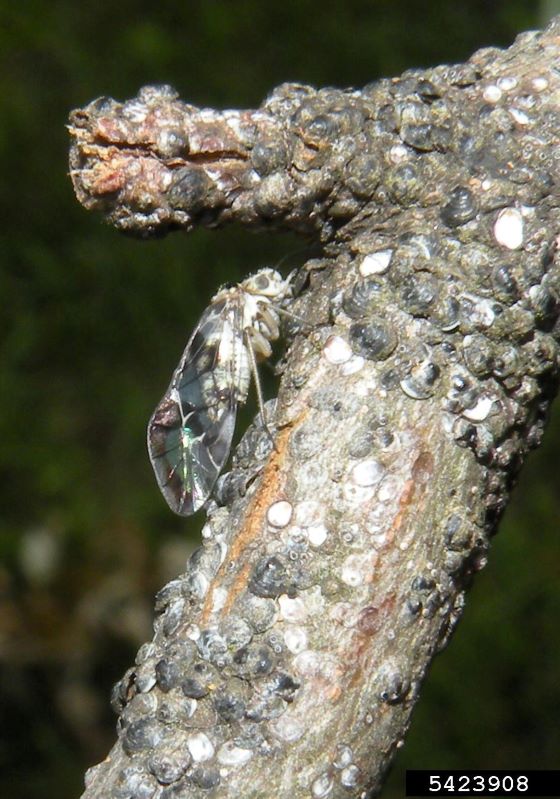Bark lice are small, soft-bodied insects with long antennae. They resemble aphids.
Bark lice make silken webs on the bark of tree trunks and limbs and are common from May to July. They are members of the order Psocoptera, and there are over 300 species in 26 families in the U.S. and Canada.
The bark lice that produce webbing on trees, Archipsocus nomas, can be found in all the southern states from Florida to Texas.
You may see the trunk and major limbs of trees encased in giant silken web due to bark lice but, they cause no damage to trees. The webbing, which never extends into the foliage, is thin and fragile and usually disappears in a few weeks. No control is recommended.

In fact, they are considered a beneficial insect because they feed on fungi, spores, pollen, lichens, and other debris on the surface of a tree’s bark. In effect, they clean the bark of a tree for free.
They are common most years but are only noticed when population levels are high, and the amount of webbing becomes more apparent. Heavy infestations of bark lice seem to be associated with relatively long periods of high humidity, which may account for the fact that most reports in Texas are from the upper coastal area.
Even though these insects are called bark lice, they are not lice. They are not parasitic on anything, not pests of humans or animals, and do not harm the trees they infest.
The adults are about 1/8th-inch long and possess two pairs of membranous wings that are held roof-like over the body when at rest. Bark lice have simple metamorphosis and go through three stages — egg, nymph, and adult. The nymphs resemble adults except they are smaller and lack wings. Bark lice have chewing mouthparts.